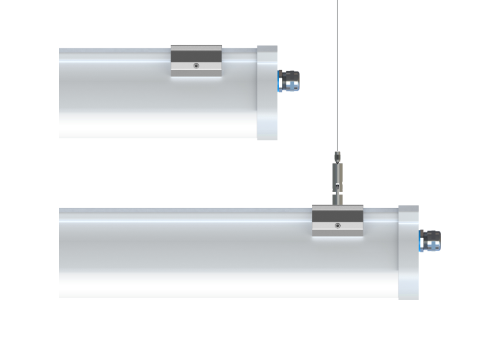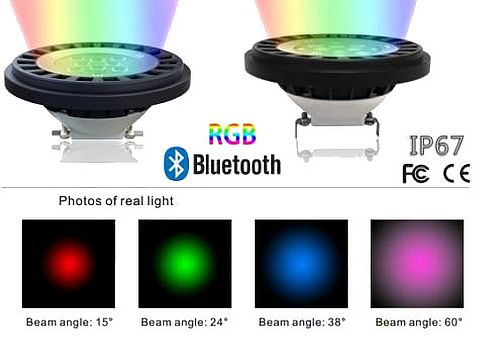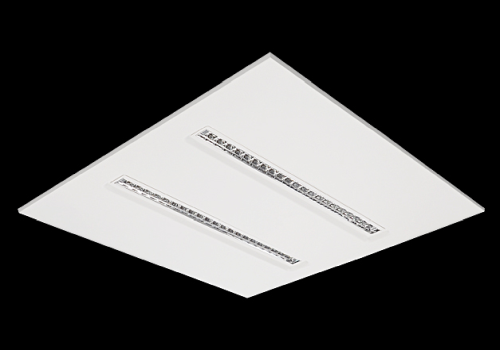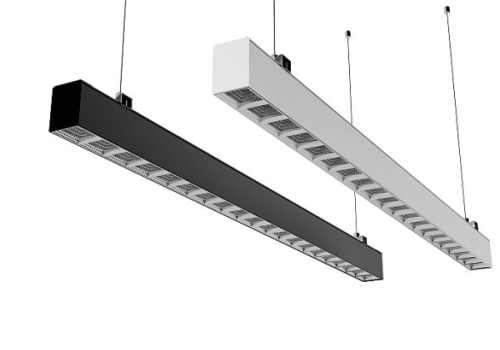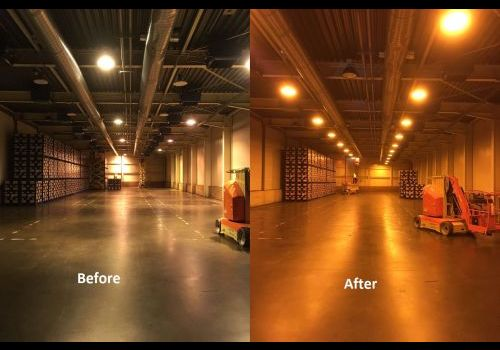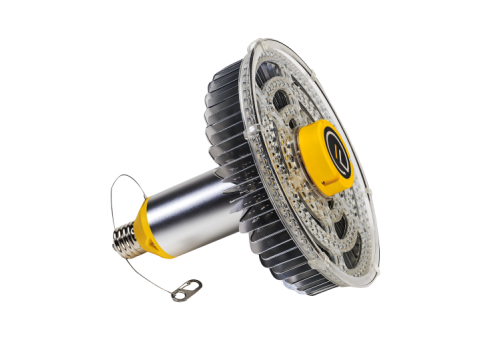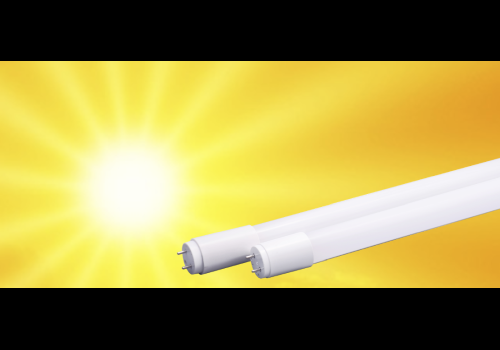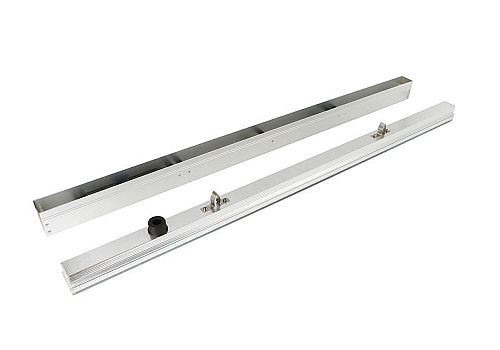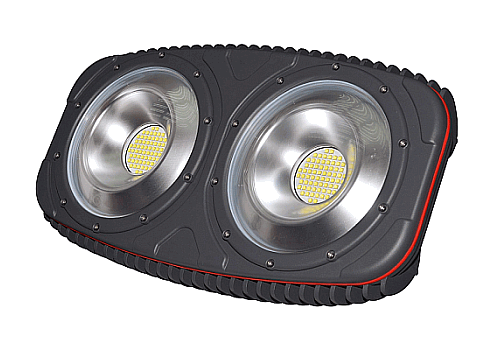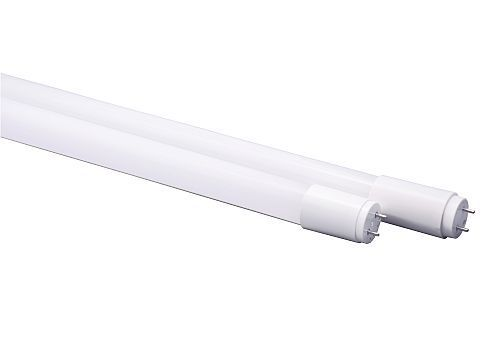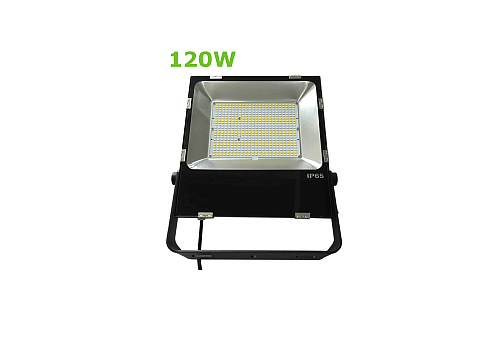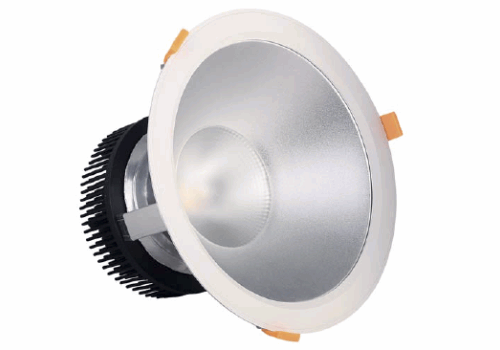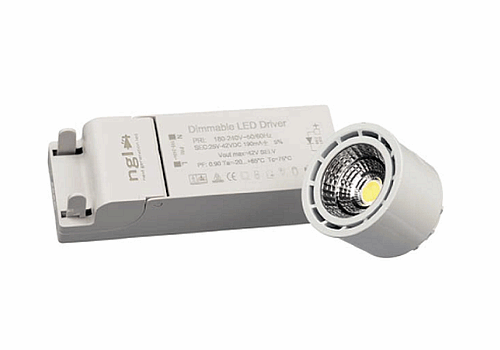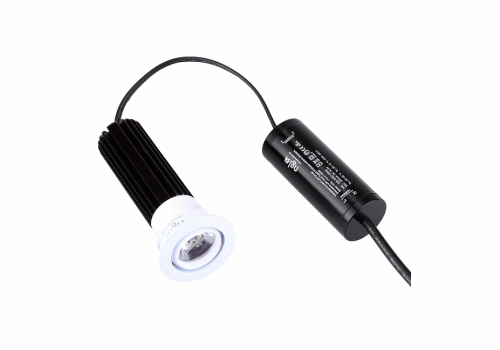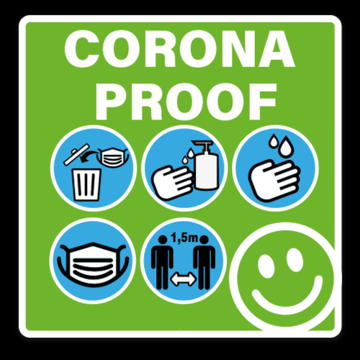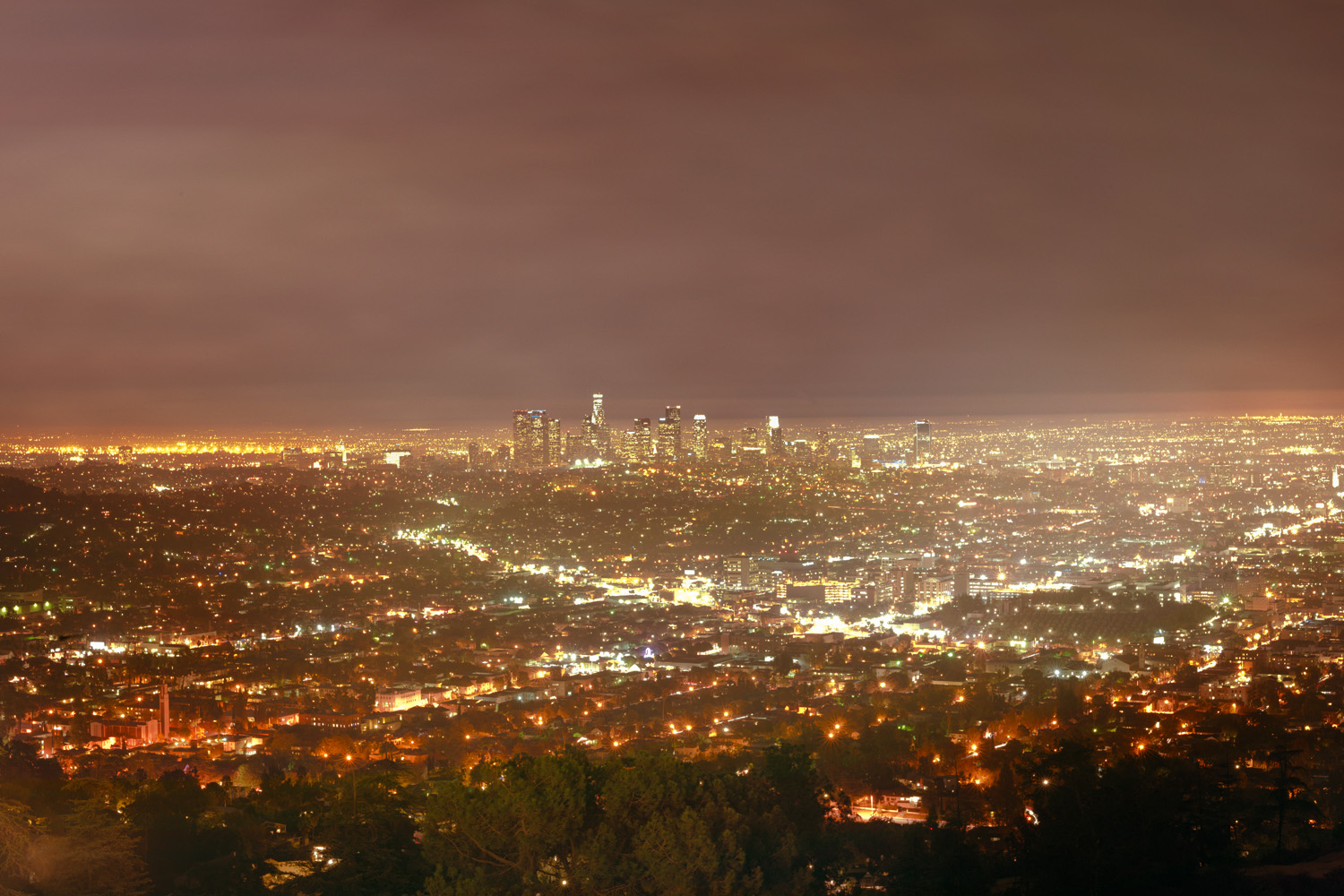
How to avoid light pollution?
The answer is quite simple, just let the light shine where it is intended! By using asymmetrical fixtures we can achieve this quite easily.A very nice project realised with suma and maha fixtures:
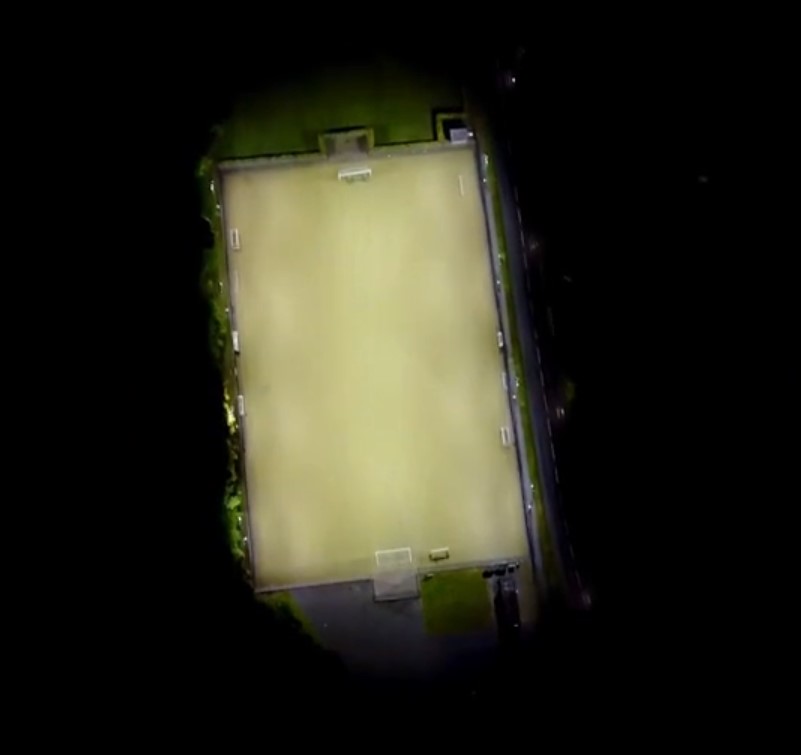
The Darklicht is another nice example:
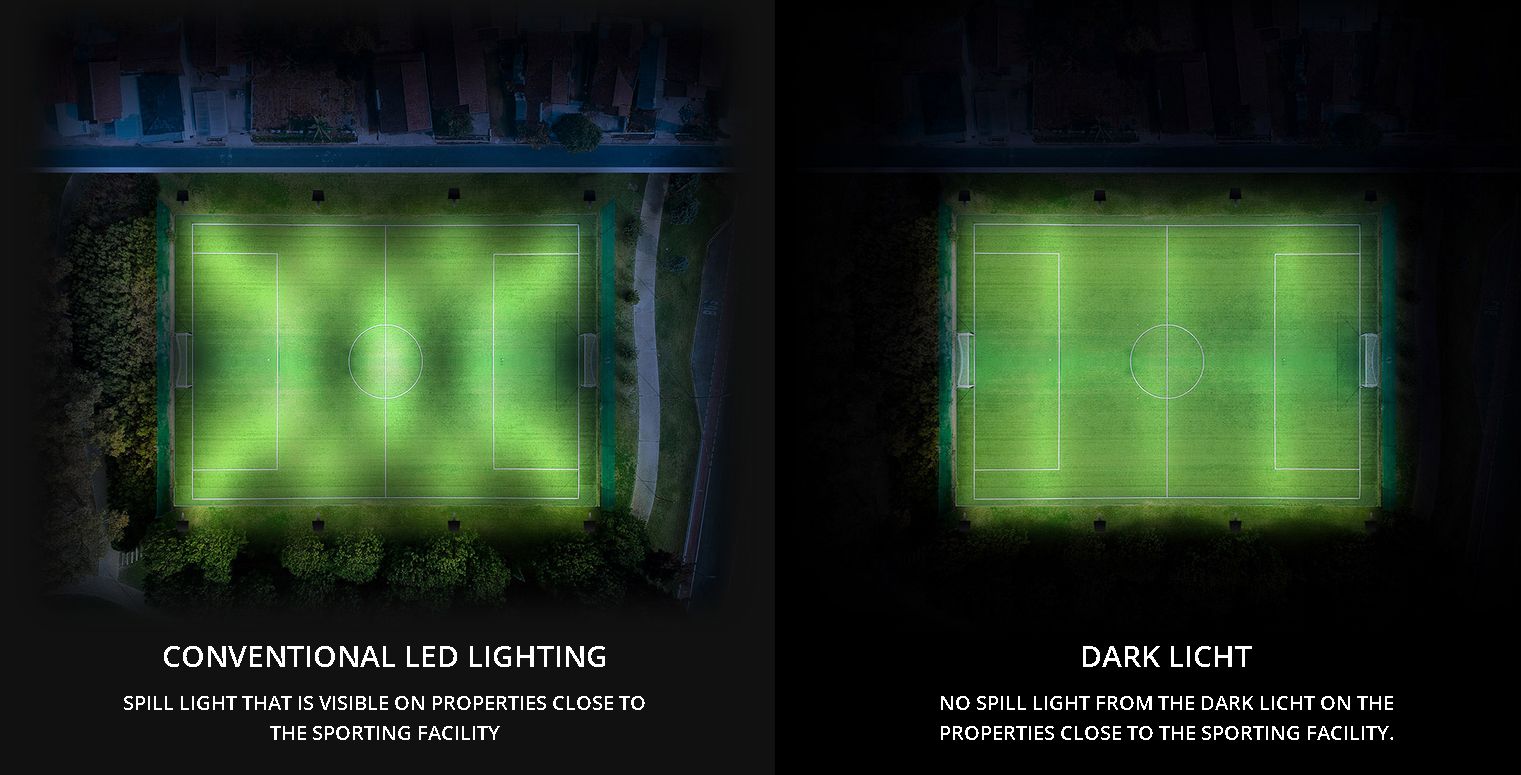
What is light pollution?
"In Outdoor lighting applications we have been dealing with obtrusive light or light pollution for a long time. We have had Guidance for obtrusive light since 1990 updated in 2013 of the limits to control light spilled either upward, into a premises or passing into living rooms or bedrooms.Local authority regulations have always, in some ways, included requirements for limiting stray light when planning a new lighting installation, for example, a sports training facility in a local community. We have known for some time that stray light entering through living room and bedroom windows can, over time, disrupt human health.
Additionally, light emitted directly upwards from equipment causes sky glow, reducing our ability to view the night sky and for Optical Observatories to obtain clean images of the night sky. There are many particles in our atmosphere which can cause light pollution including those emitted by human activity and carbon emissions from our built environment, which includes power stations.
As lighting professionals we can influence and improve the environments we and our clients occupy by deciding how to control the light which spills beyond and above the boundaries of the facilities we are working on and the energy they consume. The lighting designer, engineer or consultant must evaluate the benefits which will accrue to a client when proposing a new scheme, replacing a system at end of life, or upgrading an existing scheme.
Currently as societies we are facing a changing and a warming climate which is leading to ever more extreme weather events caused by increasing emissions. Governments are committing to carbon reduction targets in order to limit global warming to no more than 1.5 degrees Celsius based on the Paris agreement.
A route to this is for us all to reduce the energy we consume and for the lighting installations we craft to be the most effective they can be when in use. For lighting installations this is different from choosing the highest claimed lumens per watt which can easily be found on product datasheets or derived from the photometric reports from lighting calculation tools. Selecting products based purely on lumens per watt or an energy category can be misleading as it does not look at how well any particular product performs as part of a project and how the specified criteria are achieved.
We can expect in the coming years due to government and industry focus on low carbon economies that there will be a drive to reduce carbon emissions. For lighting installations this principally means connected load or power consumed at the point of use.
The products we use come with embodied energy in them from the mining of minerals to the manufactured product and finally through recycling. However this is too big a topic to cover here. My focus here will consider how to get the best from our systems in use.
There are several factors we need to put in balance when planning and defining an outdoor sports lighting project as an example:
· What is the appropriate quantity of light for a particular application
· How evenly should the light be distributed to promote good visibility.
· What is the appropriate quality of light required for the application as described by colour temperature and colour rendition.
· To which degree should on field glare be controlled and how will we do this
· How much direct upward light from the installation is acceptable
· To which degree do we need to consider light spill outwards from an installation into neighbouring properties, though living room or bedroom windows.
· In the surroundings do we need to consider impact to natural habitats and or wildlife*
· What are appropriate levels of light depreciation and replacement cycles of light emitters.
There may be more aspects to consider as subsets of the above, though these will be a good point of departure for this discussion.
From our lighting installations we want to achieve the most efficient energy usage while being good neighbours to the people living or working around the installation.
It is often the decisions we make early in the process which determine the biggest outcomes, like not over lighting, more is not always better. Choosing the right illumination level will have a significant impact on the final outcome towards a low energy solution.
For a long time before high power LED systems became feasible in outdoor application’s we had High Intensity Discharge HID lighting products which could deliver zero upward light. This we should continue to expect and demand from LED products when replacing existing systems or building new ones.
In summary it is a given that we need to fulfill the sports requirement as defined by either national standards and or sports federation guidelines.
We must consider the environment and neighbourhood around the facility ensuring the lowest achievable impact on the people living and working beyond the boundaries of the sports facility and provide evidence to demonstrate the performance which can be delivered.
There is no reason not to demand Zero direct upward light from a facility and finally we need to consider what the system looks like to the public at a distance from the facility in terms of glare / luminous intensity or apparent brightness.
Each site is different from the next and as part of the development of a lighting scheme the solution cannot be considered in isolation from the surrounding environment. When we create well considered systems we can meet the most demanding situations using well controlled lighting systems.
*Local authorities will have ecologists who can determine whether or not wildlife or sensitive habitats need to be considered and how the lighting plan can be modified to suit these requirements.
As a final note we need to understand that lighting columns are designed to carry the specific loads they were calculated to support, in terms of weight and windage area. If a system when switched on is determined to need additional shielding to further control stray light, it is likely that the glare shields would be added after the fact which could result in the imposed load on the column to exceed its design parameters, which could cause a column failure.
Before adding any accessories post installation this must be reviewed and certified by the column supplier.
This principle also applies to replacing existing HID lamps and luminaires with LED luminaries. The column supplier must be consulted before simply replacing one with the other as many equivalent LED luminaires are far heavier than the HID systems they are repealed with.
Authored by:
Michael Gorman"
- Accessoires
- Bay lighting
- Bulbs
- Decorative
- Downlighters
- Fixtures
- Bollard IP66
- Continuous Linear Pendant Led Light
- Eco Linear Led Light
- Farming industry fixture IP67
- GU10 AR111 E27/PAR 30 trackfixtures
- Inground induction luminaire 9w 12w
- LED chipboard fixture IP65
- LED Plug&Play fixture IP66
- Landscape LED light IP65
- NUD E27 lamp holder
- Polyester Fix Batten
- Ball resistant sports fixture
- Floodlight
-
Led strips
-
IP20 Led Strips
- Low Power, IP20, 2835 60LED/m, 4.8W/m, 8mm PCB
- Low Power, IP20, 2835 120LED/m, 9.6W/m, 8mm PCB
- IP20, 2835 60LED/m, 14.4W/m, 10mm PCB
- IP20, 2835 120LED/m, 19.2W/m, 10mm PCB
- RGB, IP20, 5050 60LED/m, 14.4W/m, 10mm PCB
- IP20, 2110 120LED/m, 7.2W/m, 4mm PCB
- IP20, 2110 180LED/m, 12W/m, 10mm PCB
- IP20, 2110 240LED/m, 15W/m, 10mm PCB
- IP20, 2110 300LED/m, 18W/m, 10mm PCB
- Nature led strip with violet chip, IP20, 2835 70LED/m, 9.6W/m, 8mm PCB
- Nature led strip with violet chip, IP20, 2835 140LED/m, 19.2W/m, 10mm PCB
- Tunable ledstrip 98CRI 2000K~3000K, IP20, 168LEDs/m, 16.8W/m, 10mm PCB
- Ultra long led strip 10~100m IP65
- IP67 Neon Led Strips
-
IP20 Led Strips
- Machine and desk lights
- Panel
- Spot
- Streetlight
- Tubes
- Tracklight


